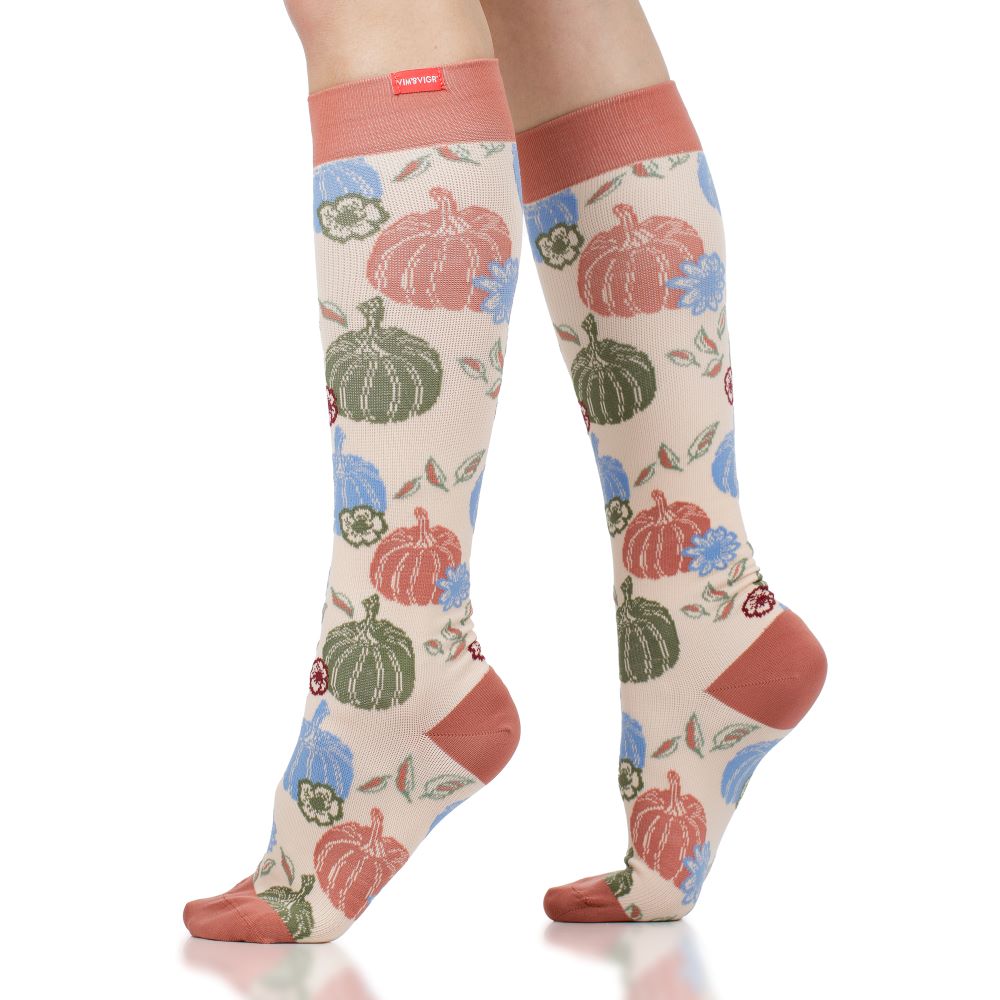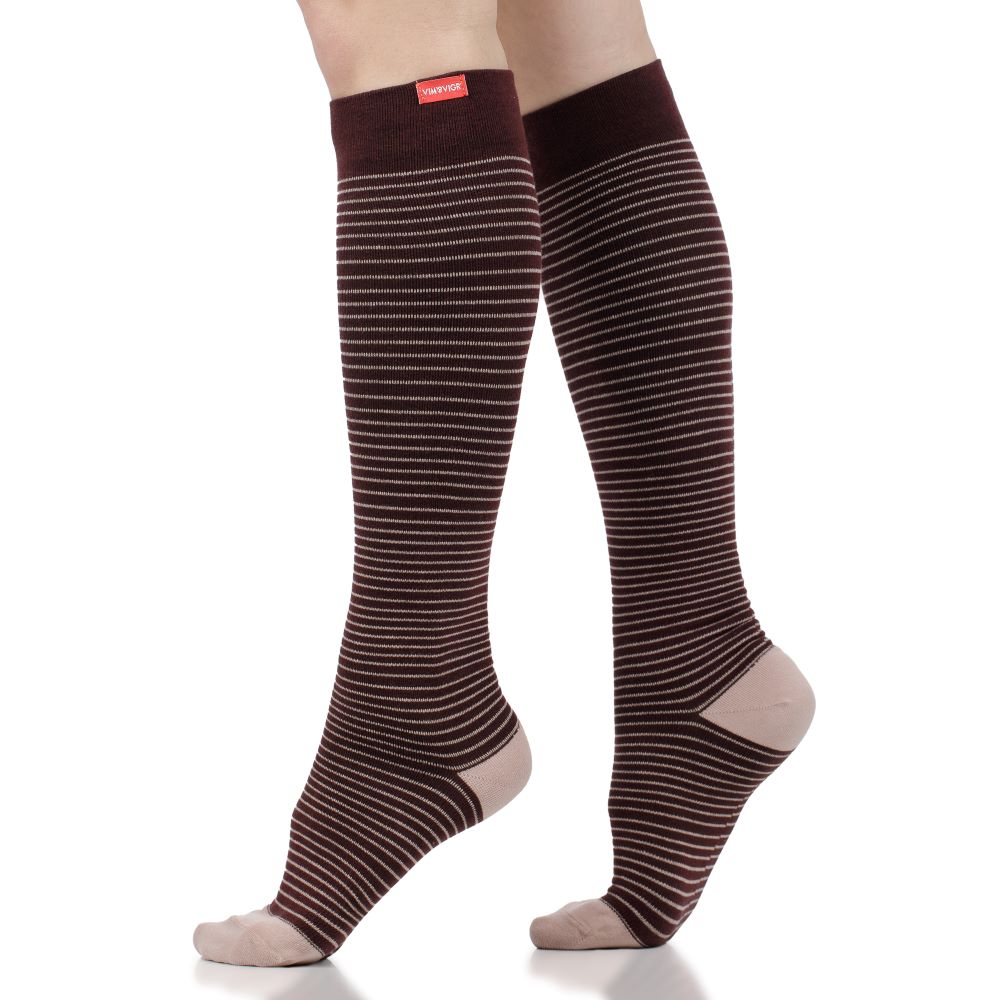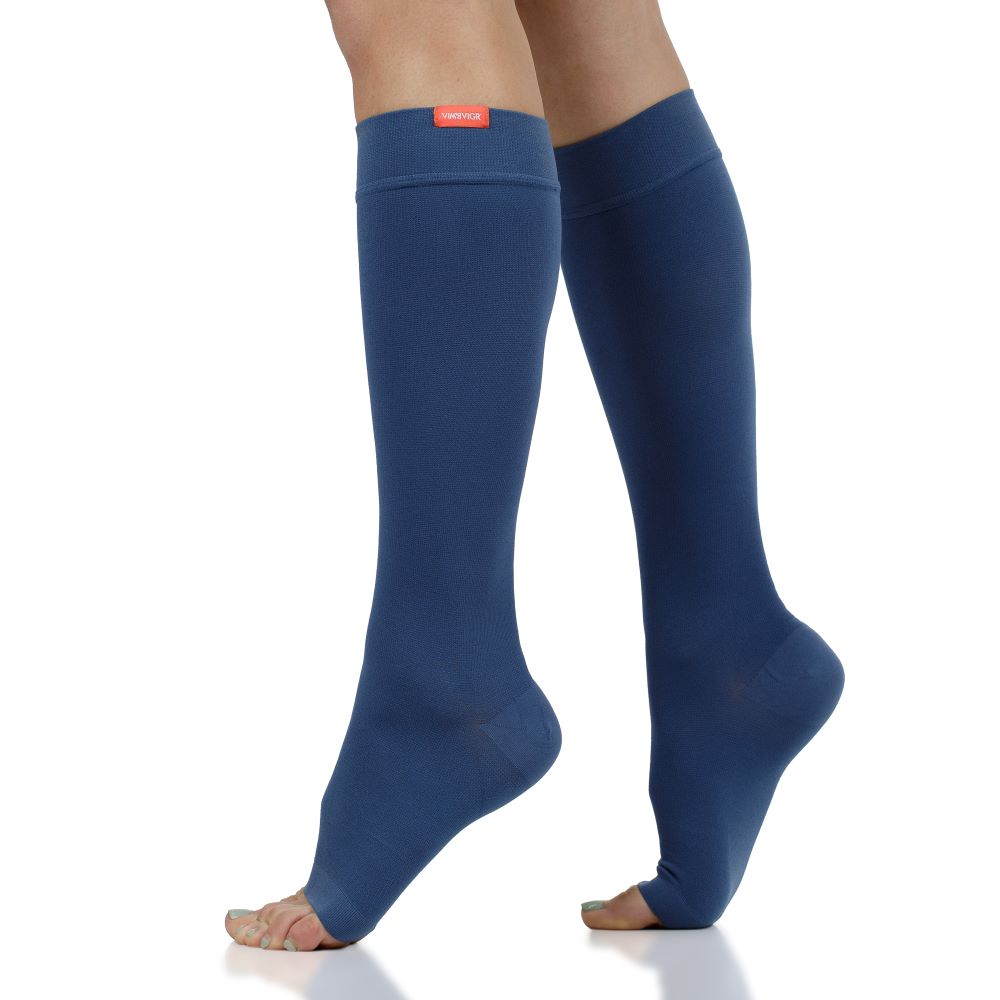How Can Compression Socks Help Plantar Fasciitis?
Plantar fasciitis is a common and painful condition that affects the heel and arch of the foot. It is caused by inflammation of the plantar fascia, which is the thick band of tissue that supports the arch of the foot. The pain can range from mild to severe and can be debilitating for some people. Compression socks have become a popular treatment for plantar fasciitis, as they are thought to help reduce inflammation and provide support for the foot. In this blog, we will explore whether compression socks help with plantar fasciitis, and if so, how to wear them and which ones to buy.
Read on to find out:
- What is plantar fasciitis and what causes this condition;
- Whether compression socks help with plantar fasciitis;
- Other benefits of compression for when you suffer from plantar fasciitis;
- How to wear plantar fasciitis compression socks and how to choose the best pair for you.
What Is Plantar Fasciitis?
Plantar fasciitis is a common condition that affects the tissue on the bottom of the foot, known as the plantar fascia. This tissue connects the heel bone to the toes and helps to support the arch of the foot. When the plantar fascia becomes inflamed, it can cause pain and discomfort, especially when walking or standing for long periods of time.
People who spend a lot of time on their feet usually end up suffering from plantar fasciitis: from nurses to sales professionals, and then athletes, hikers, and walkers, all can pick up a niggle on the bottom of the foot which can then develop into plantar fasciitis.

What Causes Plantar Fasciitis?
There are several factors that can contribute to the development of plantar fasciitis. One of the most common causes is overuse. Activities that involve repetitive impact on the feet, such as running or dancing, can put a lot of strain on the plantar fascia, leading to inflammation. This is why many athletes suffer from it.
Obesity can also increase the risk of plantar fasciitis, as extra weight puts added pressure on the feet. Moreover, people with certain occupations, such as factory workers or teachers, who are on their feet for extended periods of time, may be more prone to developing the condition.
Flat feet, high arches, and tight calf muscles are all additional possible sources leading to plantar fasciitis. If you have flat feet, your plantar fascia may stretch too much. High arches can cause it to become strained and overworked. Tight calf muscles can make it difficult to flex the foot, which can lead to inflammation of the plantar fascia.
In some cases, plantar fasciitis can also be caused by certain medical conditions, such as rheumatoid arthritis or ankylosing spondylitis. These conditions can cause inflammation in the feet, among other symptoms, and this can lead to plantar fasciitis.
Treatment for plantar fasciitis typically involves rest, ice, and stretching exercises to help relieve pain and inflammation. In some cases, a doctor may recommend the use of orthotic inserts to support the arch of the foot and reduce strain on the plantar fascia. You can also resort to some specialized supportive walking or running shoes for this. In severe cases, a doctor may recommend physical therapy or even surgery to treat the condition.
Are Compression Socks Good for Plantar Fasciitis?
Compression socks are designed to apply gentle pressure to the feet and lower legs. Graduated compression socks do so in a gradual manner from the ankle upwards, creating a welcome relief for those who spend lots of time on their feet. As a result, the socks can help to improve blood flow and reduce swelling. However, the specific cause of plantar fasciitis is inflammation of the plantar fascia, a tissue on the bottom of the foot, rather than swelling.
This is why compression socks cannot help directly with plantar fasciitis, and you’d be right to wonder if these socks can help relieve pain or anything related to this condition. While some people may find that compression socks help to reduce pain and discomfort, there is limited scientific evidence to support their use specifically for plantar fasciitis.
If you are considering using compression socks for plantar fasciitis, it is best to talk to your doctor first. They can provide advice on the most appropriate treatment for your individual situation. In most cases, as mentioned above, treatment for plantar fasciitis involves stretching exercises and rest, rather than using compression socks.
However, this does not mean that good quality compression socks can’t be a great help when you suffer from plantar fasciitis. Many people find that compression socks provide relief from pain and discomfort, and that they support the foot in ways that are especially beneficial.
Benefits of Compression Socks for Plantar Fasciitis
Compression socks are designed to apply gentle pressure to the feet and lower legs. This can help to improve blood flow and reduce swelling. For people with plantar fasciitis, this may help to reduce pain and discomfort when walking or standing for long periods of time.
In addition, compression socks can help to support the arch of the foot. This can be especially helpful for people with flat feet, who may be more prone to developing plantar fasciitis. The gentle pressure provided by the socks can help to distribute weight evenly across the foot, reducing strain on the plantar fascia.
Compression socks are also easy to use and can be worn during everyday activities. They are available in a variety of styles and sizes, so you can find a pair that fits comfortably and provides the right amount of support.
It is important to note that compression socks should not be used as a replacement for other treatments for plantar fasciitis. Stretching exercises, rest, and other forms of physical therapy are typically recommended to treat this condition. If you are considering using compression socks, they should be a complement to other work you’re doing to relieve your discomfort and to address underlying reasons for your plantar fasciitis.

How To Wear Plantar Fasciitis Compression Socks
If you have plantar fasciitis and wish to use compression socks, it is important to wear them correctly in order to get the most benefit. Here are some tips on how to wear compression socks for plantar fasciitis:
- Choose the right size: Compression socks are available in a range of sizes, so it is important to choose a pair that fits well. If the socks are too tight, they may cause discomfort or restrict blood flow. If they are too loose, they may not provide the right amount of support. Measure your feet and consult the sizing chart provided by the manufacturer to find the right size for you.
- Put the socks on first thing in the morning: Compression socks work best when they are worn all day, so it is best to put them on as soon as you get out of bed in the morning. This will help to support your feet and reduce pain and discomfort throughout the day.
- Wear your socks with comfortable, supportive shoes: Compression socks are designed to be worn with shoes, so it is important to choose a pair that is comfortable and provides good support for your feet. Avoid wearing high heels or other shoes that may put extra strain on the plantar fascia.
- Gradually increase the amount of time you wear the socks: If you are not used to wearing compression socks, it may take some time to get used to them. Start by wearing the socks for a few hours at a time and gradually increase the amount of time you wear them each day. This will help your feet to adjust to the added support.
- Follow your doctor's advice: If you are using compression socks for plantar fasciitis, it is important to follow your doctor's advice on how to wear them. They can provide guidance on the best way to use compression socks as part of your overall treatment plan.
By following these tips, you can help to ensure that you are wearing your compression socks correctly and getting the most benefit from them.
The Best Compression Socks for Plantar Fasciitis
While it is difficult to say which compression socks to wear for relief from plantar fasciitis symptoms, choosing a good-quality, reliable pair that fits with your lifestyle and activity levels is essential and can make a huge difference.
It is important to choose socks that are the right size for you, at a compression level that is initially comfortable for prolonged use, and from a material that suits your activity. For example, we recommend hiking socks made from Merino wool, which are exceptionally breathable and great for year-round temperature control. For everyday use at work, at the same time, you might opt for a colorful cotton pair.
Finally, always consult with a medical specialist such as a podiatrist, to evaluate your situation and make sure that you’re picking the right socks for your personal scenario.



















Leave a comment